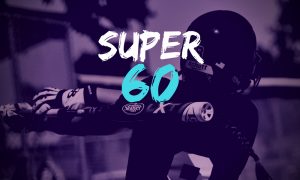Pitching Pointers: Revisiting the Powerline

The Powerline is the most important pitching tool when it comes to a softball pitcher throwing strikes. For those unfamiliar, the Powerline is an imaginary line that runs from the center of the pitching mound and continues all the way to the center of home plate. Pitchers at every age should learn, know, and use the Powerline every time they step on the mound.
There are many ways to replicate the Powerline on the ground during practices. For pitchers who practice outside, it is encouraged to draw a line in the dirt for all of the drills a pitcher completes leading up to her full pitch. Once the pitcher moves back to throw the full pitch, there should already be a Powerline from the drills. If pitcher’s practice throwing indoors, try to acquire a pitching mat with a line on it, or get creative and use some tape.
Pitchers at all levels will utilize the Powerline in practices and games throughout their entire career. The Powerline benefits the young beginning pitchers because it helps them line up their body and work on exact mechanics in drill form. When pitchers practice drills such as the wrist flick, T, K, knee arm circles, and standing arm circles, encourage them to do so from the “open” position. To be open, a pitcher must have her toes lined up on the Powerline with her hips and belly button facing to the side, away from the catcher. When a pitcher is closed, her hips and belly button will be facing the catcher. It is always encouraged to practice drills in the open position so the pitcher can develop muscle memory of the arm coming through with a clear path and nothing in the way.
The Powerline also benefits advanced pitchers who make their way up the age levels. As pitchers get older, they will rarely throw a pitch down the middle. Spotting pitches will become more common, which means the pitcher will avoid the Powerline that runs down the middle of the plate. How many Powerlines are there really? The answer is three. There is one Powerline that runs from the center of the mound to the middle of home plate, one that runs to the inside corner, and one that runs to the outside corner. More advanced pitchers will use the other two Powerlines to spot pitches, but the concept remains the same. Toes and body must be lined up on the new line to hit the spot.
When advanced pitchers begin to throw movement pitches, they will use the middle Powerline as a reference to help them with body positioning. When pitchers throw curve balls for example, they must cross over the Powerline to align their body in a position to clear their back hip out of the way. Screw balls are the opposite where the pitcher will step out away from the Powerline but then cross back over it for the finish. Again, this is more advanced and will be taught to a pitcher who has already mastered her fastball, spots, and a change- up.
The Powerline is the most important pitching tool when it comes to a softball pitcher throwing strikes. If a pitcher is struggling with body mechanics and control, it’s more than okay to revert back to the Powerline. The Powerline helps with body positioning in drill form as well as when a pitcher is throwing a full pitch. Always keep the Powerline in the back of your mind when you are practicing and in games. If things get wild, take a step back and revisit lining your body up on the Powerline. It’s a helpful tool that will stay will a pitcher throughout her entire softball pitching career.





